The Two Paths of the Riddle
The riddle was designed with two paths, an easy and a hard way.
The easy way was simple, as long as you knew the key to all this was the Coniunctio.
Simply take the two ‘opposites’ of the coordinates shown on the hoax and real map of Juan Fernandez Island and add the whole degrees together.
The two 'opposites': the hoax and real map of Juan Fernandez Island
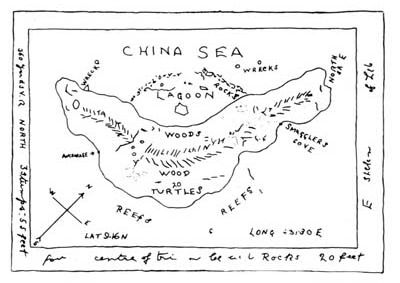
Coordinates: Lat 9.16N Long 31.30E
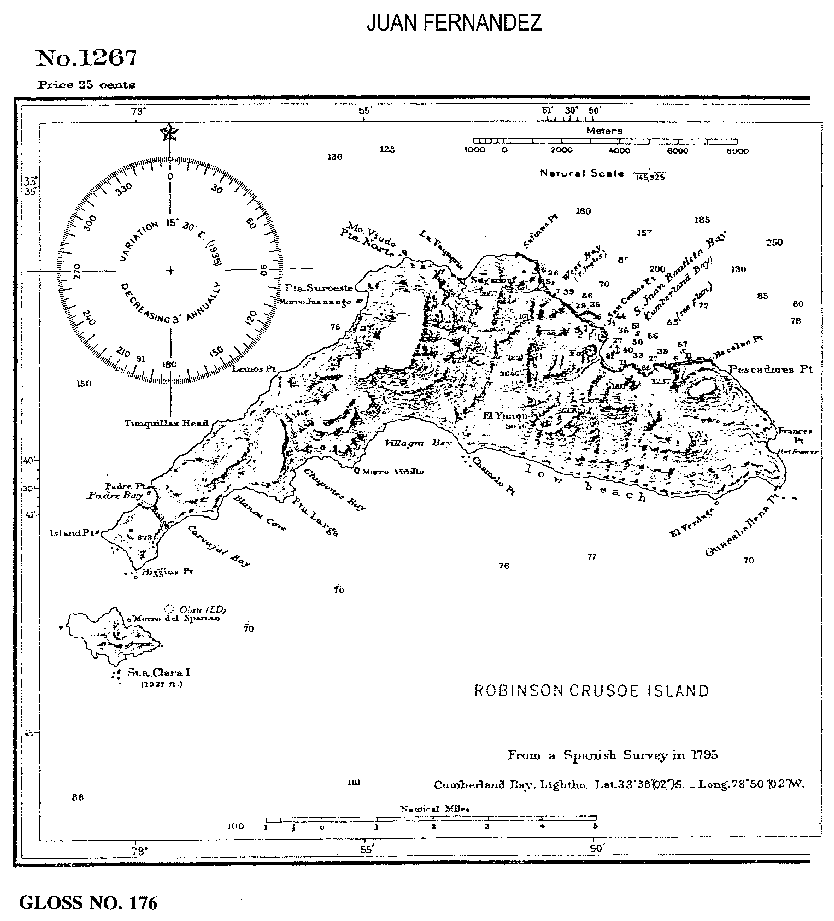
Coordinates: 33.36S 78.50W
Latitudes 9+33= 42, 180-42 = 138 longitude
Longitudes 31+78= 109, 109-90 =19 latitude
That is Wilkins giving you Ubilla’s map’s central datum point from which you head the 245 Antares (Pristarius) bearing to the Pinaki Trinity.
That is all fine if you have Ubilla’s or the monument map already. Otherwise you had to do it the hard way.
Enter Richard E Latcham and his crazy book ‘El Tesoro de Los Piratas de Guayacan’.
El Tesoro de Los Piratas de Guayacan – The Treasure of the Pirates of Guayacan
In constructing this part of the hoax riddle Richard Latcham simply employed the magicians trick of misdirection. He told you the story was about the treasure of the pirates of Guayacan but put within it Ubilla’s map, not so much to find but to recognise it when shown. If you were this far into solving the riddle you had a fair idea already what the map looked like so you just recognised it for what it was.
His book, written in Spanish, was designed so that Spanish speakers would not be able to recognise that something else was occurring. The clues were written in a type of English cant only identifiable by an English speaker who was correctly following the clues in the Captain Kidd’s Treasure Charts hoax. The marriage of the two halves, that is the clues appearing in Wilkins’ books for the English speaking world and the clues appearing in Latcham’s Spanish book, is necessary to solve it. This ensured that if anyone stumbled onto some part of it accidentally then they would not be able to proceed (eg. Gilbert Hedden on Oak Island) for only those who correctly followed the clues from the English speaking northern hemisphere side to the Spanish speaking southern hemisphere counterpart could.
There are two pointers included though that should have been apparent to any Spanish speaker studying Latcham’s book that things were not what they seem.
The first is that the ancient documents shown written in Hebrew style letters translate letter for letter and word for word into text that is in modern Spanish. The ‘documents’ were just fabricated using a substitution code with a Hebrew style letter simply replacing the letters of the modern alphabet.
The second is Latcham’s map showing the area of Playa Blanca (White Beach) where the treasure is supposed to be hidden. This is the northwest sector of Bahia Herradura (Horseshoe Bay). This bay is also referred to as the Bay of Guayacan, named after the main town.
If you try to relate Latcham’s map with a real map of the Playa Blanca area it will not match. The reason is Latcham’s map is a clever fusion of two different scales and two different locations. On the left side is part of Playa Blanca in small scale and on the right side is Cape Dampier on Cocos Island. There is two trompe le oueils drawn into it also, two grotesque profiles of heads appear in the Cocos Island coastline on Latcham’s map (look for the eyes, noses and mouths). You should recognise the handwriting on Latcham’s map is the same as some of the lettering on the hoax Captain Kidd ‘turtle’ map of Juan Fernandez Island . You should also recognise the point with the small islets for Playa Blanca match the point and islets of ‘Cape Blanco’ on the Wilkins W1 & W2 map.
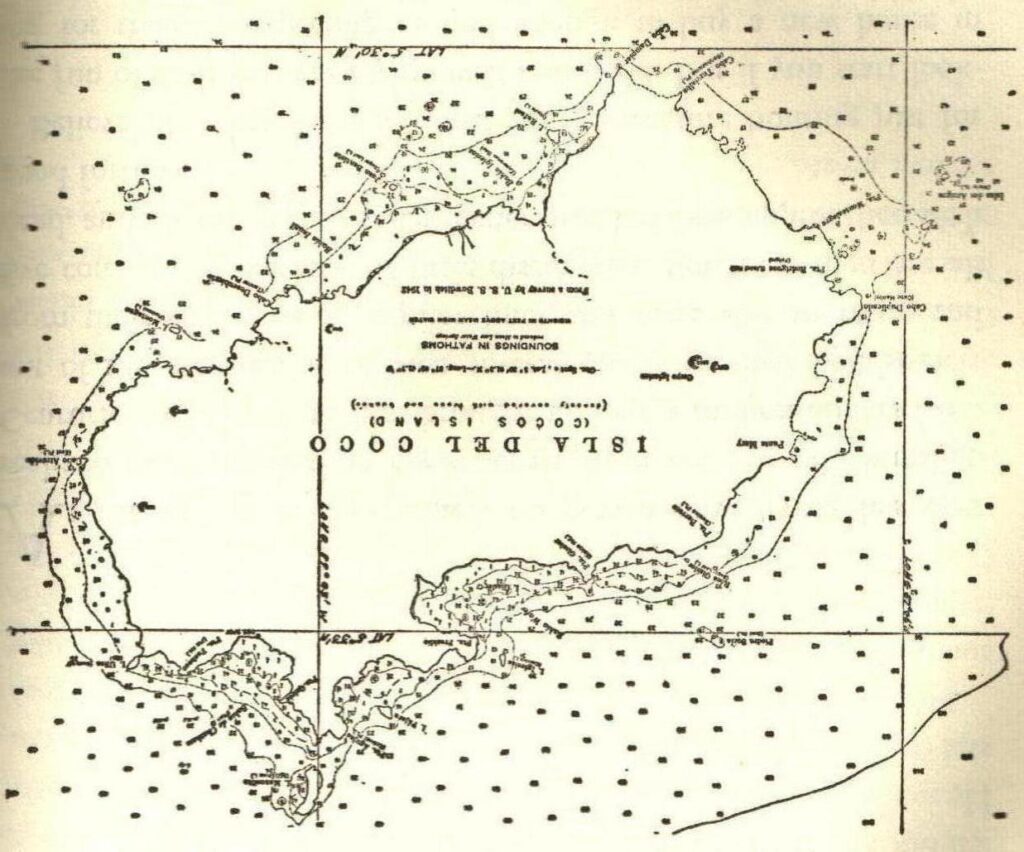
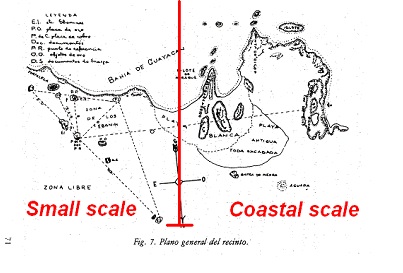
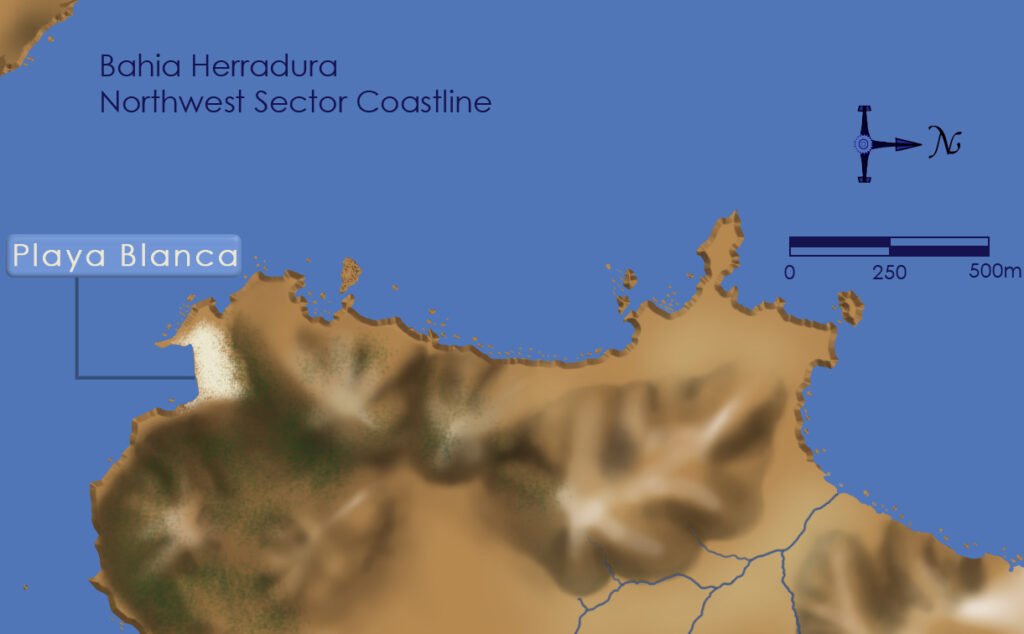
Here are the clues left for an English speaker who is following the hoax to solve the riddle;
In one of the book’s illustrations Latcham shows a copy of one of the ‘ancient documents’ accompanied by its translation. When the lettering is checked, text to suggested translation, the word ‘saca’ is really ‘sara’. Look carefully and speak what is written in the translation. It appears to be a letter written by Wilkins to Latcham. It is just in pig Spanish as you would expect the Three Stooges to speak when they meet the Spanish Ambassador but carries the meaning in English cant.
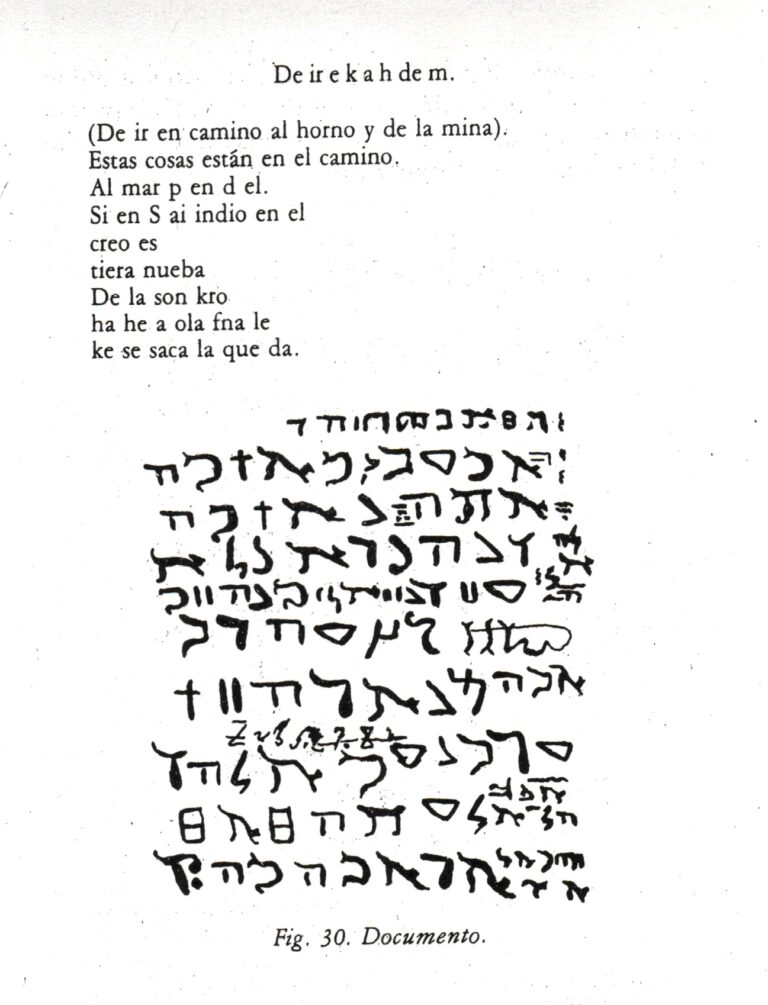
Dear Richard The coast is the way A map of it Has an indian in it He is black New tip He is the son of a crow Ha he Oh Hello here is the end Ke se sara la de da
Latcham’s suggested translation of the document is:
A sur ei (hay) ke (que) uterin. To the south ei (there is) ke (that) uterin.
S. P. N. AMERO. S. P. N. AMERO
Al sur el sutern N. P. E. A. To the south the sutern N. P. E. A.
a la ida to the going
The document’s text really produces the letters,
ASUREIPEUTERIN
SPNSEAMERD
ANSURENSUTERNNSEA
ALAIDA
By recognising that ‘ANSURE’ and ‘SUTERN’ is cant for ‘answer’ and ‘southern’, and by eliminating the lettering which was slightly different in shape/size to the others a message can be assembled,
ASUReiPeuteRIn
spnSEamerd
ANSUREnSUTERNnSEA
ALAIDA
‘A surprise answer, southern sea, on the island’
Pictures exist of the plate of copper discovered by Castro upon which is supposed to be a caravel, a cannon and a rose.
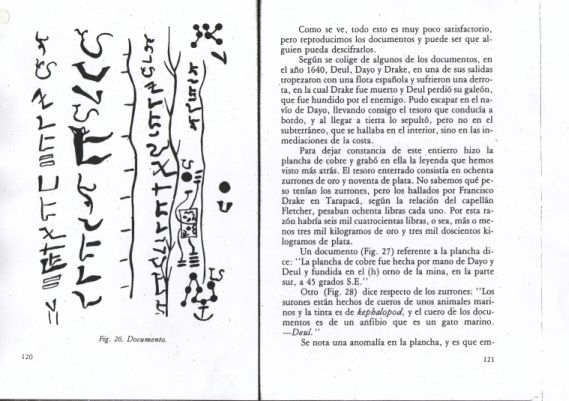
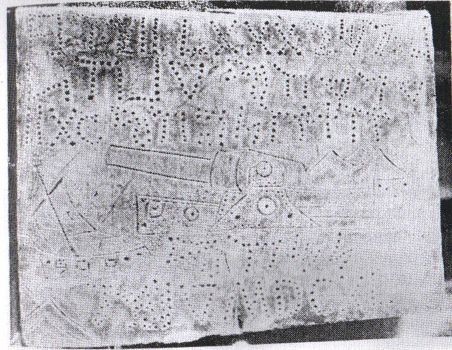
On the copper plate is some of the fake Hebrew script, a poor representation of a small ship and a mounted gun whose design is closer to 1900 rather than 1600 when this plate was supposed to be buried by the Brethren of the Black Flag. A representation of a rose is in lower right hand corner and the faint outlines can just be made out.
If you are wondering why this was made part of it all, look up ‘Copper Scroll’, ‘Treasure’ and ‘Qumran’ on the internet.

